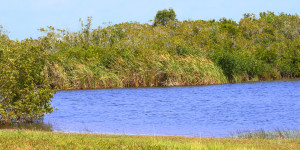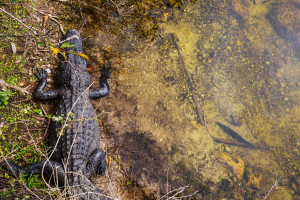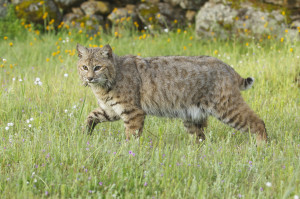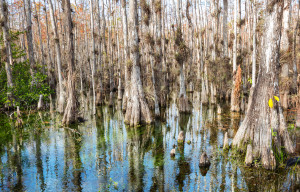 Did you know the Everglades is nicknamed the River of Grass? The Everglades received this nickname in 1947 by Marjory Stoneman Douglas; she used this name to reflect the area’s slow movement of shallow sheet flow through the marshes. The Everglades is home to many species of grass, including muhly grass, blackrush, arrowfeather, Florida bluestem, and Elliot’s lovegrass. Across the Everglades, these species of grass grow no talker than 4 feet.
Did you know the Everglades is nicknamed the River of Grass? The Everglades received this nickname in 1947 by Marjory Stoneman Douglas; she used this name to reflect the area’s slow movement of shallow sheet flow through the marshes. The Everglades is home to many species of grass, including muhly grass, blackrush, arrowfeather, Florida bluestem, and Elliot’s lovegrass. Across the Everglades, these species of grass grow no talker than 4 feet.
More than 100 species of native grass in the Poaceae family grow inside the Park, as well as dozens of other species in different grass families. Grasses in the Everglades can live in both the wet and dry season. These grasses have also adapted to fires. In fact, after a fire, these grasses regrow once heavy rains commence in the region during the wet season of May to October.
To talk a little more about muhly grass, it is native to the southeastern United States. It grows in clumps at about 3 to 4 feet tall and wide. It’s an upright and stiff grass. In the fall, it blooms purple flowers. You can find muhly grass in the pine flatwoods and coastal prairies. The Native Americans used to use this type of grass for basket weaving.
Sawgrass dominates all other grass in the Everglades. It actually covers thousands of acres of marsh. It’s consider a sedge that can grow up to 6 feet or more. Wiregrass grows densely and grows up to 3 feet tall. Gopher tortoises and quail feed on this grass. Cutthroat grass grows up to 4 feet in height and it helps control erosion. Toothache grass is a perennial bunch grass that grows more than 3 feet tall; it’s stem contains a substance that can numb feeling in the tongue and gums.
If you’ve never been to the Everglades or seen miles of grass, a great way to explore it is through an airboat tour. Captain Mitch’s Everglades Airboat Tours has been giving tours to people in this wetland for more than 30 years. To book a tour. Click our Everglades airboat tour page or call 800-368-0065.
 How much do you know about the Everglades? At Captain Mitch’s Airboat Tours, we spend a lot of time zipping through the waters of the Everglades, so we thought we’d share some quick and fun facts about this beautiful Park with you.
How much do you know about the Everglades? At Captain Mitch’s Airboat Tours, we spend a lot of time zipping through the waters of the Everglades, so we thought we’d share some quick and fun facts about this beautiful Park with you. The bobcat may be cute, but it not a feline you can cuddle and pet. Bobcats can easily be spotted in the Everglades and are not endangered. They are mainly nocturnal creatures but can be seen during daylight. In the Everglades, bobcats have been seen walking around Bear Lake Trail, Snake Bight Trail, and the main Park road.
The bobcat may be cute, but it not a feline you can cuddle and pet. Bobcats can easily be spotted in the Everglades and are not endangered. They are mainly nocturnal creatures but can be seen during daylight. In the Everglades, bobcats have been seen walking around Bear Lake Trail, Snake Bight Trail, and the main Park road. The Everglades is a scientist’s dream. There is so much to explore, research, track, and investigate in the River of Grass. Research is occurring in the Everglades year-round. From climate change to animals, researchers are learning more about this special Park.
The Everglades is a scientist’s dream. There is so much to explore, research, track, and investigate in the River of Grass. Research is occurring in the Everglades year-round. From climate change to animals, researchers are learning more about this special Park.





